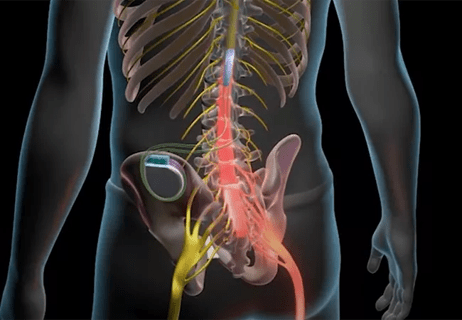Fourth iteration of the guidelines focuses on high-risk patient identification and evidence on newer drugs

An updated set of guidelines for managing postoperative nausea and vomiting (PONV) provides caregivers with comprehensive direction on risk stratification, prevention and treatment of PONV in both adults and children. This is the fourth iteration of the guidelines after the previous guidelines were published in 2014. The current guidelines are developed based on a systematic review of the literature published up through September 2019 and include advice on preventing, treating and managing PONV.
Advertisement
Cleveland Clinic is a non-profit academic medical center. Advertising on our site helps support our mission. We do not endorse non-Cleveland Clinic products or services. Policy
Nausea and vomiting in the postoperative period have an estimated incidence of 30% in the general surgical population and rates are as high as 80% in high-risk cohorts. PONV is associated with a significantly longer stay in the post-anesthesia care unit (PACU), increase hospital length of stay, readmissions and healthcare costs.
“We created an algorithm to identify patients who are at serious risk of nausea and vomiting after surgery,” says Sabry Ayad, MD, an anesthesiologist in Cleveland Clinic’s Anesthesiology Institute, and one of the authors of the guidelines. “We were able to identify that female patients who are non-smokers, receiving opioids in the recovery room and are younger in age, are at a greater risk of developing PONV.”
Dr. Ayad also notes the importance of taking a patient’s history and incorporating previous anesthetic experience with PONV into the recovery pathway. A patient mentioning a bad PONV experience with previous surgeries should be a red flag, and caregivers should try to do everything possible to prevent another PONV episode from happening. “For these patients, you must take a multimodal approach, where you give them everything that you can to prevent them from having nausea and vomiting. This includes using medications working on different receptors and have different mechanisms of action along with other anesthesia and surgical measures to minimize the PONV risk such as the use of total intravenous anesthetics like propofol and reducing the use of narcotics.”
Advertisement
The authors covered seven specific updates based on the results of their review. These include:
The authors found that patient-specific risk factors for PONV in adults include female sex, a history of PONV and/or motion sickness, nonsmoking status, and young age. Anesthetic risk factors of PONV include volatile anesthetics, nitrous oxide, and postoperative opioids. Previous guidelines pointed to nitrous oxide as a likely cause of PONV; however recent research indicates that nitrous oxide reactions are time-dependent. There are several measures institutions can take to reduce the rate of PONV, such as risk scores and risk assessments.
Strategies recommended to reduce baseline risk for PONV include (1) minimization of perioperative opioids with the use of multimodal analgesic regimens; (2) preferential use of regional anesthesia; (3) preferential use of propofol infusions as the primary anesthetic; (4) avoidance of volatile anesthetics; and (5) adequate hydration in patients undergoing same-day surgery. For children, opioid sparing techniques continue to be recommended.
One of the major updates in this version of the guidelines is that the use of multimodal prophylaxis in patients with one or more risk factors is now recommended. Ondansetron is the most commonly used and studied 5-HT3 receptor antagonist, and it remains the “gold standard” in PONV management. Beyond 5-HT3 receptor antagonists, certain NK1 receptor antagonists, corticosteroids, antidoaminergics, antihistamines, anticholinergics and nonpharmacologic prophylaxis are recommended. A complete list of these therapies, along with the recommended dosage and timing of each, is available in the full version of the guidelines.
Advertisement
When the risk for PONV is low and the surgery time is minimal (<30 minutes), caregivers may refrain from administering antiemetic prophylactics.
When PONV prophylaxis has failed, patients should not receive antiemetic treatment from the same pharmacological class as the PONV prophylaxis. The authors note that repeated doses of antiemetics from the same class within six hours does not provide additional therapeutic benefit when compared to placebo. But, after six hours, administration of a second dose of 5-HT3 receptor antagonist or butyrophenones may be considered if no other alternatives are available.
The authors have reduced the threshold for administering multimodal PONV prophylaxis to patients without any risk factors. High-risk males should also receive three or more antiemetic prophylaxis.
The American Society for Enhanced recovery released an expert opinion in 2016 stating that “all patients should receive PONV prophylaxis during the perioperative period.” The statement also recommended that the number of medications used for treatment and prophylaxis should be determined by the number of modifiable and nonmodifiable risk factors. The panel agrees with these statements in the updated guidelines. The panel has also made recommendations for PONV management in enhanced recovery pathways for specific types of surgeries, which can be viewed in the full guidelines.
Advertisement
Advertisement

Researchers seek solutions to siloed care, missed diagnoses and limited access to trauma-informed therapies

Study participants also reported better sleep quality and reduced use of pain medications

Two-hour training helps patients expand skills that return a sense of control

Program enhances cooperation between traditional and non-pharmacologic care

National Institutes of Health grant supports Cleveland Clinic study of first mechanism-guided therapy for CRPS

Pain specialists can play a role in identifying surgical candidates

Individual needs should be matched to technological features

New technologies and tools offer hope for fuller understanding